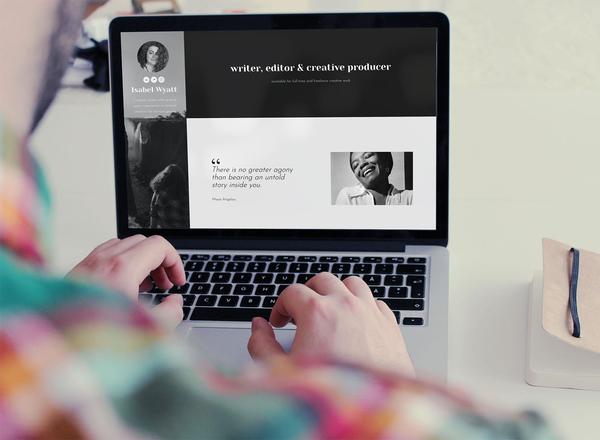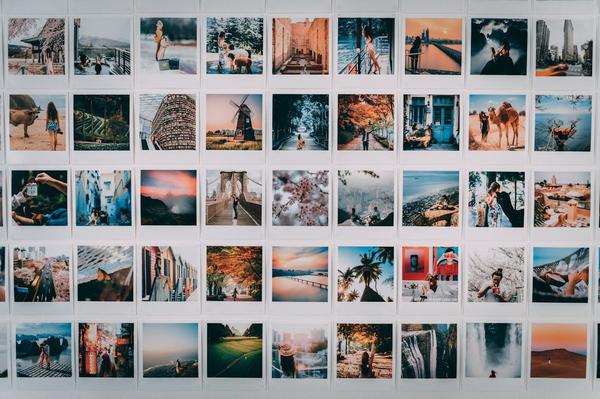
Creating Your Art Director Portfolio: A 2024 Guide

Sam Hindman
Published onAre you passionate about graphic design and building branding through imagery? If that sounds like you, you'd fit right in as an art director. In essence, art directors work to build a cohesive representation of a brand throughout all of its visuals.
Not only is it an exciting, fast-paced career, but it's also constantly growing. According to the US Bureau of Labor Statistics, jobs in art direction are projected to grow by 6% in the next ten years!
Such a promising field means increased competition, which is why aspiring art directors should do everything they can to stand out from others pursuing the same jobs. The best way to do this is by curating a compelling, professional portfolio website.
Whether you're entering the world of art directors or you're an independent graphic designer searching for new prospects, this guide will tell you exactly how to build the best portfolio possible to showcase your talent, skill, and unique appeal.
Why Do You Need An Art Director Portfolio?
Aside from the apparent reason, which is to stand out from your competition, having a cohesive portfolio can make many aspects of your career far more straightforward.
For instance, you'll no longer need to dig around your archives and files to find a particular piece. Instead, it will be categorically listed precisely where you'd expect. This ease of access can help save you from quite a few headaches.
It's also an excellent way to build your own brand identity. Coordinating elements of your website's design and theme, like color schemes and fonts, can give prospective employers (or clients) an impression of your personal brand.
Choosing What To Include In Your Art Director Portfolio
Every portfolio website is going to look different according to the needs of the individual putting it together. But, as a general rule, you should keep the following elements in mind:
Highlight Key Projects: Choose projects that display your ability to manage complex campaigns and your knack for branding. Include a mix of work that shows your versatility across diverse fields, such as logo design, web design, and advertising.
Showcase Your Roles: For each project, clearly define your role. Were you the lead graphic designer, or did you oversee the project as a creative director? This helps potential clients or employers understand your expertise and leadership in the creative process.
Incorporate Case Studies: Instead of just showing the final outcome, use case studies to detail the challenge, your approach, the solutions you crafted, and the results of the project. This demonstrates your project management skills and your strategic thinking.
Deciding How To Niche Down
While designers need to show that they are capable of versatility in their work, it's also helpful to narrow that work into a specific niche or sub-genre of art. This can help ensure that you're appealing to your ideal audience, not just any random individual. For example, if you're only interested in being an art director for a fashion brand, there's no reason to include work involving the automotive industry. Having a specific concentration can position you as an expert in that particular field.
Prioritizing Visuals Over Words
Writing copy isn't everyone's strength. As an art director, what's most important is that your graphics tell a story on their own. While your pieces should have descriptive text to accompany them, that isn't going to be the star of the show. Make sure that your graphics are high-quality, pronounced, and strategically placed in a visually appealing manner. That's where everyone's eyes should be drawn!
Including Other Pages In Your Portfolio Design
While your body of work will be the cornerstone and centerpiece of your portfolio website, it isn't the only thing that you should remember to include. This website is all about you, not just your work. Here are some other important pages that you should build into your portfolio.
About Page
Your About page is an opportunity for your audience to get to know the individual behind the art better. Even the most talented individual could be abysmal to work with, which is why it's so crucial that your personality shines and helps you stand out.
If you want to connect more with your audience, try showcasing some of the following in your About page:
Source of Inspiration: Where do you typically find inspiration? Discuss how global influences or specific experiences fuel your creativity and contribute to your unique style as an art director.
Passion for Art Direction: Why do you specialize in art direction? Share what drives your passion for overseeing projects and leading creative teams and how this influences your approach to design.
Overcoming Professional Challenges: Can you recall any significant challenges you've faced in your career? Outline how you tackled these obstacles, demonstrating your problem-solving skills and resilience, which are crucial traits for any leadership role in design.
Career Objectives: What are your aspirations as an art director? Discuss your goals, whether they involve innovating in the field of advertising, influencing graphic design trends, or leading a creative agency. This helps your audience understand the impact you aim to make in the industry.
Contact Page
Though this might seem like a no-brainer, putting all of your energy into designing your website can cause you to forget the fundamentals. An easily accessible Contact page can be the difference between whether or not someone decides to contact you. Keep this page simple and aesthetically pleasing to compel visitors to contact you.
Leverage Your Expertise To Build Credibility
Even if you've never worked as an art or creative director before, you must use whatever experience you have to your advantage. If you don't have a portfolio that's teeming with examples of prior history, there are other ways to display your experience in an appealing manner. Here are some ways to show that you're an expert in your field:
Testimonials: By using testimonials from prior clients or employers, you can display not only that your skills are high-quality but also that you're a high-quality person to be around. Sometimes, more than your own opinion is going to be needed to sell you. You'll need others to vouch for you as well, and testimonials are an excellent way to prove to those considering your services that you are credible.
Local Competitions: Always look for local competitions involving graphic design and art direction. These are more common than you think, and sometimes, getting your name out there is precisely what you need to drive more people to become interested in your work.
Social Media: Once your portfolio website has been built, your next order of business is driving traffic. Consider your social media profiles and devise a cross-platform strategy. Not to mention, successful social media accounts mean that you have a solid understanding of how to build brand awareness, a talent that's highly important for an art director to possess.
FAQs
What Should I Focus On When Crafting the Layout of My Art Director Portfolio?
When designing the layout of your portfolio, focus on simplicity and professionalism to ensure your artwork and projects are the centerpiece. Utilize a clean, intuitive site design that enhances the presentation of your work. This means choosing a style that complements your personal brand and showcases your design talent effectively. High-quality images, consistent typography, and a cohesive color scheme can help articulate your vision and creative skills.
How Can I Use My Portfolio to Reflect My Personal Brand as an Art Director?
Your portfolio is a prime opportunity to showcase your personal brand and set the tone for your professional image. Incorporate elements that reflect your unique style and vision, such as a custom logo or a distinctive layout. Use the "About" page to share your inspirations, educational background, and the story behind your career path.
What Types of Projects Should I Include to Demonstrate Versatility in My Art Director Portfolio?
This is a tricky balance, as you want to demonstrate that you are capable and versatile while also concentrating on a specific niche. You could accomplish this by including things like branding campaigns, logo design, and more complex storytelling projects that involve multiple kinds of media.
Build Your Art Director Portfolio Today With Journo Portfolio
Now that you have the knowledge required to build a winning art direction portfolio, all that's left is to put it into practice! Using the tips and tricks we've listed, you have what it takes to show the world that your killer career as an art director is only just beginning.
Journo Portfolio prides itself on balancing ease of use and potential for customization, making it one of the best portfolio builders online. It's in the name, after all! Check out our complete list of features, and get started with your free account today.





